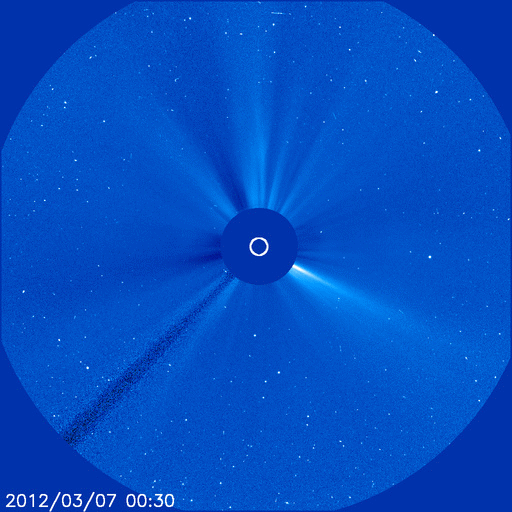 |
| AR 1429: group in the top right |
On March 10, sunspot AR 1429(pictured in the in the top left) began releasing two powerful M class solar flares. The classification of solar flares is done by measuring the peak flux, in watts per meter squared, with a logarithmic scale. A-type flares are the smallest in magnitude and X-type are the largest. M-type flares are just below X-class. A coronal mass ejection was also observed. Coronal mass ejections occur when a large amount of ionized particles as well as electromagnetic radiation are released. The CME observed by LASCO (Large angle and spectrometric coronagraph) pictured in the top right. During a solar storm, a lot of particles in Earth's upper atmosphere becomes ionized then recombines causing a release of radiation down towards earth's surface. Astronomer Thomas Ashcraft captured these frequencies and can be heard at this link. Another cool thing about solar flares is sometimes radio signals are able to propagate for longer distances. Sometimes radio waves will be reflected off of the ionosphere allowing signals to travel much longer distances than usual.
source: spaceweather.com, nasa.gov

No comments:
Post a Comment